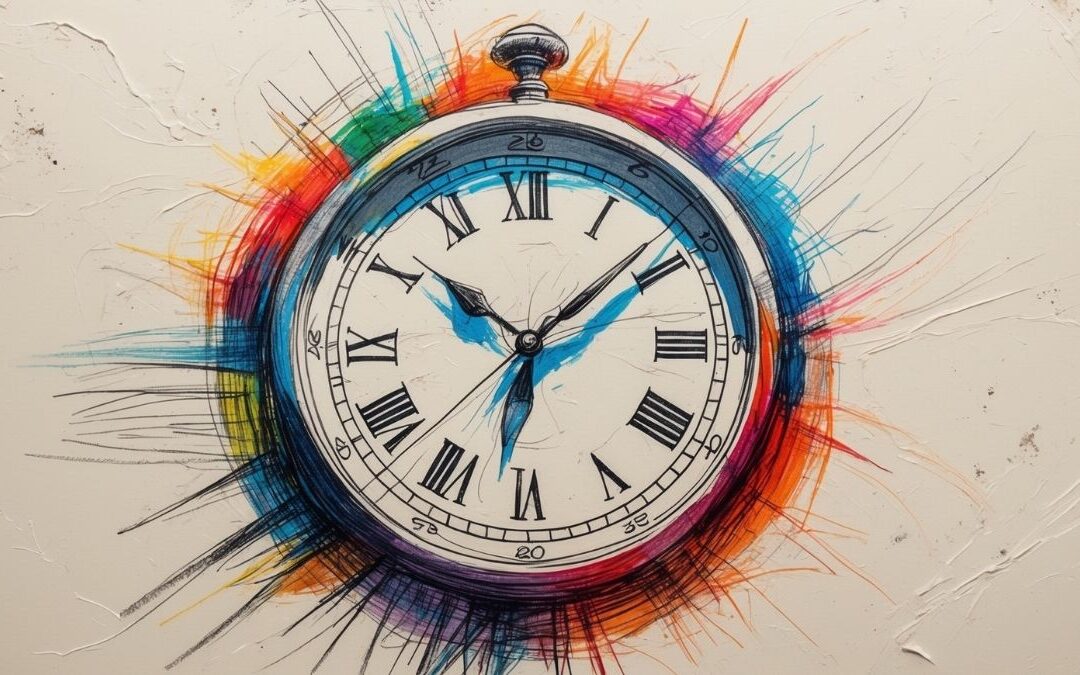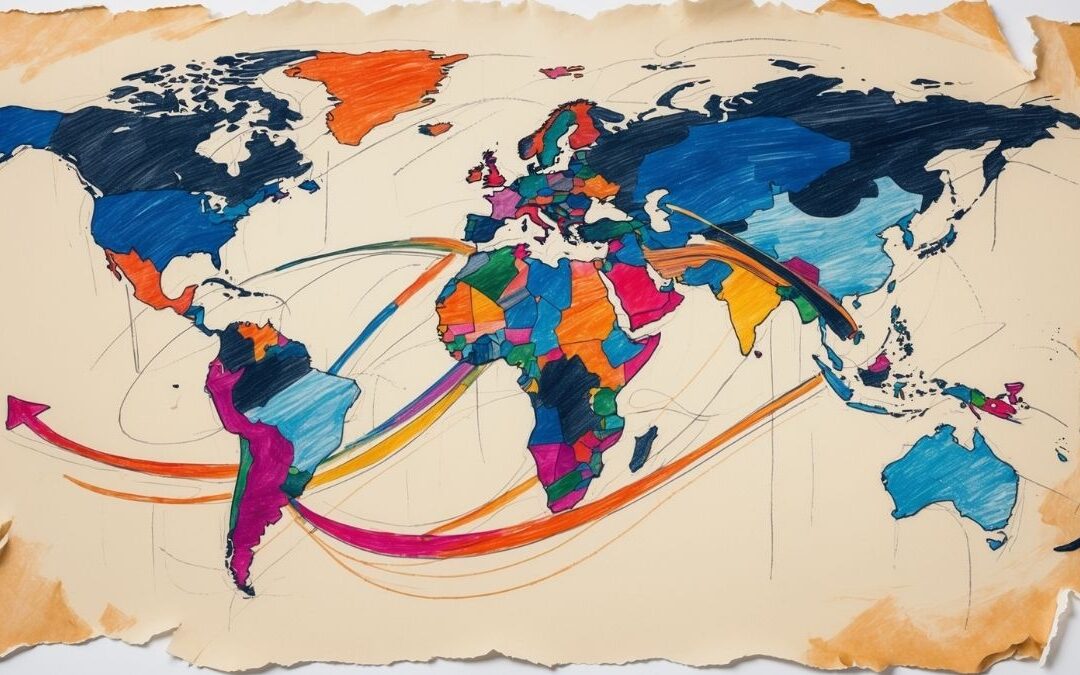- Introduction
- Are Creative People Right Brained?
- What is the Right Brain?
- The Myth of the Right-Brained Creative
- The Importance of Both Hemispheres
- The Importance of Environment
- Conclusion
- Plus Discussions
- Q — How can exposure to diverse experiences and perspectives help to cultivate creativity?
- Q — What role does the environment play in fostering creativity, and how can individuals create a conducive environment for their creative pursuits?
- Q — In what ways can people challenge their preconceptions and assumptions to enhance their creativity?
- Q — How might cultural values and norms impact a person’s creativity?
- Q — What implications does the debunking of the “right-brained creative” myth have for education and training in creative fields?
Introduction
Debunking the Myth of Right-Brained Creativity: The Truth About the Creative Process Meta Description: Explore the concept of right-brained creativity and learn the truth about the involvement of both brain hemispheres in the creative process. Debunk the myth and understand the impact of environment on creativity.
Are Creative People Right Brained?
When we think of creative people, we often assume that they are right-brained. This idea has been around for a long time, but is it actually true? In this blog post, we will explore the concept of right-brained creativity and investigate whether there is any scientific basis to this commonly held belief.
What is the Right Brain?
Before we can discuss whether creative people are right-brained, we need to understand what the right brain actually is. The brain is divided into two hemispheres, the left and the right. Each hemisphere is responsible for different functions. The left hemisphere is generally associated with logical thinking, language, and analysis, while the right hemisphere is associated with creativity, intuition, and emotions.
The idea of right-brained creativity stems from the belief that the right hemisphere is more active in creative people. However, research has shown that the brain is a highly interconnected organ, and creativity involves the coordination of many different areas of the brain, not just the right hemisphere.
The Myth of the Right-Brained Creative
Despite the widespread belief in the right-brained creative, there is actually little scientific evidence to support the idea. A study published in the journal PLOS ONE found no evidence that people who identified as creative had a stronger connection between the two hemispheres of the brain than non-creative people. In fact, the study found that creativity was associated with greater connectivity throughout the brain, not just in the right hemisphere.
Another study published in the journal Brain and Cognition found that creativity is not related to a specific region of the brain, but rather to the ability to make connections between different regions. The study suggests that creativity is a result of increased communication between different areas of the brain, not just the right hemisphere.
So, while it is true that the right hemisphere is involved in creative thinking, it is not the only part of the brain involved. Creativity is a complex process that requires coordination and communication between many different areas of the brain.
The Importance of Both Hemispheres
While the idea of right-brained creativity is a myth, it is important to note that both hemispheres of the brain are involved in creative thinking. The left hemisphere is responsible for analysis and logic, which are important for generating ideas and evaluating their feasibility. The right hemisphere is responsible for intuition and creativity, which are important for generating new and innovative ideas.
In order to be truly creative, both hemispheres of the brain need to work together. For example, a writer may use the left hemisphere to analyze the structure and grammar of a sentence, while using the right hemisphere to generate creative and imaginative descriptions.
The Importance of Environment
While there is no evidence to suggest that creative people are right-brained, it is important to note that the environment in which a person grows up and develops can have a significant impact on their creativity. A study published in the journal Creativity Research Journal found that the cultural environment a person is exposed to can have a significant impact on their creativity.
The study found that people who grow up in cultures that value individualism tend to be more creative than people who grow up in cultures that value collectivism. This is because individualistic cultures tend to value self-expression and uniqueness, while collectivist cultures tend to value conformity and social harmony.
The study also found that people who grow up in cities tend to be more creative than people who grow up in rural areas. This is because cities tend to be more diverse and expose people to a wider range of experiences and perspectives.
Conclusion
In conclusion, the idea that creative people are right-brained is a myth. While the right hemisphere is involved in creative thinking, creativity is a complex process that involves coordination and communication between many different areas of the brain.
Both hemispheres of the brain are important for creativity, and the environment in which a person grows up and develops can also have a significant impact on their creativity. While there is no evidence to suggest that creative people are born with a certain brain structure, it is clear that exposure to diverse experiences and perspectives can help to cultivate creativity.
In order to foster creativity, it is important to expose ourselves to new and different experiences, and to challenge our preconceptions and assumptions. This can involve traveling to new places, trying new activities, or simply engaging with people who have different perspectives than our own.
It is also important to create an environment that is conducive to creativity. This can involve setting aside dedicated time for creative pursuits, creating a physical space that inspires creativity, or seeking out like-minded individuals who can provide support and encouragement.
Ultimately, the idea of right-brained creativity is a myth that oversimplifies the complex process of creativity. While the right hemisphere of the brain is involved in creative thinking, creativity requires coordination and communication between many different areas of the brain. Additionally, the environment in which a person grows up and develops can have a significant impact on their creativity, underscoring the importance of exposure to diverse experiences and perspectives.
By understanding the complexity of the creative process, we can better foster and support creativity in ourselves and in others. Whether we are writers, artists, or simply people who want to think more creatively, we can benefit from embracing the full range of our cognitive abilities, and from exposing ourselves to new and different experiences that can inspire and fuel our creative pursuits.
Plus Discussions
Q — How can exposure to diverse experiences and perspectives help to cultivate creativity?
Exposure to diverse experiences and perspectives can help to cultivate creativity in a number of ways. Firstly, it can expand our knowledge and understanding of different cultures, lifestyles, and ways of thinking, which in turn can inspire new ideas and ways of approaching problems. Secondly, exposure to diverse experiences can help to break down mental barriers and challenge preconceptions, which can lead to more creative thinking. Thirdly, exposure to diverse perspectives can help us to see problems from multiple angles and find innovative solutions that take into account a range of viewpoints. Finally, exposure to diverse experiences and perspectives can help to foster empathy and understanding, which can help us to connect with others on a deeper level and create works that resonate with a wider audience. Overall, exposure to diverse experiences and perspectives is a valuable tool for cultivating creativity, as it can broaden our horizons, challenge our assumptions, and inspire new ideas.
Q — What role does the environment play in fostering creativity, and how can individuals create a conducive environment for their creative pursuits?
The environment can play a crucial role in fostering creativity, as it can either hinder or facilitate the creative process. A conducive environment for creativity is one that is supportive, inspiring, and allows for experimentation and exploration. Some ways individuals can create such an environment for their creative pursuits include:
- Space: Having a dedicated physical space for creative work can help to separate it from other areas of life, and create a mindset that is more focused on creativity. It can also help to create an environment that is inspiring and conducive to creative thinking.
- Time: Setting aside dedicated time for creative pursuits is important, as it allows individuals to focus solely on their creative work without distraction. It can also help to establish a routine and a sense of discipline that can aid the creative process.
- Mindset: Having a positive mindset that is open to experimentation and failure is important for creativity. Cultivating a growth mindset and reframing mistakes as opportunities for learning can help to overcome fear and self-doubt, which can be major obstacles to creativity.
- Collaboration: Collaborating with others can be a great way to foster creativity, as it allows for the exchange of ideas and perspectives. Working with others who have different skills and backgrounds can also lead to new and innovative solutions.
- Inspiration: Surrounding oneself with sources of inspiration, whether it be through books, music, art, or nature, can help to spark new ideas and fuel the creative process.
Overall, creating a conducive environment for creativity involves setting aside time and space for creative work, cultivating a growth mindset, collaborating with others, and surrounding oneself with sources of inspiration. By creating an environment that supports and nurtures creativity, individuals can increase their chances of producing innovative and meaningful work.
Q — In what ways can people challenge their preconceptions and assumptions to enhance their creativity?
Challenging preconceptions and assumptions can be an effective way to enhance creativity. Here are a few ways individuals can challenge their preconceptions and assumptions:
- Seek out new experiences: Trying new activities, traveling to new places, or engaging with people who have different perspectives than our own can help to challenge our assumptions and broaden our perspectives.
- Question assumptions: Whenever faced with a problem or challenge, take a step back and question the assumptions that underlie it. Ask yourself why things are done a certain way, and whether there might be other ways to approach the problem.
- Embrace ambiguity: Creativity often involves working with incomplete or ambiguous information. Embracing ambiguity and uncertainty can help to spark new ideas and approaches to problem-solving.
- Experiment: Try out new approaches and ideas, even if they seem unconventional or risky. Don’t be afraid to fail, as failure can be a valuable learning experience that can lead to new insights and breakthroughs.
- Surround yourself with diversity: Engage with people who have different backgrounds, perspectives, and experiences than your own. This can help to expose you to new ideas and ways of thinking, and challenge your assumptions about the world.
Overall, challenging preconceptions and assumptions involves taking risks, being open-minded, and embracing uncertainty. By doing so, individuals can enhance their creativity and approach problems in new and innovative ways.
Q — How might cultural values and norms impact a person’s creativity?
Cultural values and norms can have a significant impact on a person’s creativity. Cultural values are the shared beliefs and practices of a group or society, while cultural norms are the unwritten rules and expectations that govern behavior within a society. Here are a few ways in which cultural values and norms might impact a person’s creativity:
- Emphasis on conformity: Cultures that place a strong emphasis on conformity and adherence to social norms may discourage individual expression and creativity. People may feel pressure to conform to established ways of doing things, rather than exploring new and innovative approaches.
- Emphasis on collectivism vs individualism: Cultures that place a strong emphasis on collectivism may prioritize social harmony and conformity over individual expression and creativity. In contrast, cultures that place a strong emphasis on individualism may value self-expression and uniqueness, which can lead to greater creativity.
- Attitudes towards risk-taking: Cultures that are risk-averse may discourage people from taking creative risks, as failure or unconventional approaches may be seen as unacceptable. In contrast, cultures that encourage risk-taking may be more supportive of creativity, as experimentation and exploration are seen as valuable.
- Perceptions of the arts: Some cultures may place a greater emphasis on the arts than others. For example, cultures with a strong tradition of literature, music, or visual arts may be more supportive of creative pursuits in these areas.
- Access to resources: Cultural norms and values can also impact access to resources for creative pursuits. For example, cultures that prioritize science and technology may have greater funding and resources for research and development in these areas, while creative pursuits such as the arts may be underfunded and undervalued.
Overall, cultural values and norms can impact a person’s creativity in a variety of ways. By understanding these influences, individuals can better navigate cultural barriers and find ways to cultivate their creativity within their cultural context.
Q — What implications does the debunking of the “right-brained creative” myth have for education and training in creative fields?
The debunking of the “right-brained creative” myth has several implications for education and training in creative fields:
- Emphasizing the importance of both hemispheres: Education and training in creative fields should emphasize the importance of both hemispheres of the brain for creativity. Rather than focusing solely on “right-brained” thinking, students should be encouraged to develop skills in both logical thinking and creative thinking.
- Encouraging interdisciplinary approaches: Creativity often involves making connections between different areas of knowledge. Education and training programs in creative fields should encourage interdisciplinary approaches that draw on knowledge from different fields, rather than focusing on one specific area.
- Fostering a growth mindset: Education and training programs should foster a growth mindset that encourages experimentation, risk-taking, and learning from failure. This can help to overcome the fear of failure and self-doubt that can hinder creativity.
- Providing exposure to diverse experiences and perspectives: Education and training programs should provide exposure to diverse experiences and perspectives, as this can help to broaden students’ horizons and inspire new ideas. This can include opportunities for travel, study abroad, internships, and collaboration with people from different backgrounds.
- Incorporating the latest research on creativity: Education and training programs should incorporate the latest research on creativity, including the latest findings on the neuroscience of creativity and the role of the environment in fostering creativity.
Overall, the debunking of the “right-brained creative” myth suggests that education and training programs in creative fields should take a more holistic approach to creativity, emphasizing the importance of both hemispheres of the brain and incorporating a variety of approaches and perspectives. By doing so, these programs can better prepare students to navigate the complex and ever-changing landscape of creative work.










0 Comments